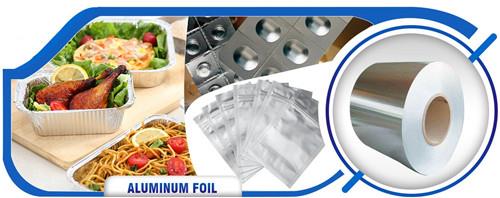The first packaging use of aluminum, closures on glass bottles, dates to the early 1900’s. This was a successful application mainly due to the fact that the closure could be made to hold firmly to the somewhat irregular glass threads. Aluminum foil was embraced for packaging soon after its initial production in 1913. Aluminum cans are utilized to package food and drinks. Coca-Cola and Pepsi have actually been utilizing aluminum cans since 1967.
Aluminum for packaging is preponderantly through sheet or foil. Commercially pure aluminum is generally used, although non-heat-treatable alloys of the aluminum-magnesium and aluminum-manganese types are likewise used for higher strength. With both commercial-purity aluminum and alloys, broad ranges in mechanical residential or commercial properties are available through varying degrees of work hardening.

Making uses of aluminum in product packaging are recognized by the market in 4 categories:
→ Flexible wraps and laminates, integrating foil
→ Rigid containers, made from sheet, foil laminates, or drawn heavy-gage foil, or impact-extruded from slugs
→ Closures for bottles and containers, made from sheet or foil
→ Collapsible tubes, made from slugs by effect extrusion.
Aluminium is the light weight material of choice for packaging manufacturers due to its excellent formability and impermeable nature. These key properties make aluminium the ideal choice for:
※ Can
※ Ropp Cap
※ Container Seal
※ Lid
※ Cover Flexible Package
※ Tube Household Foil
※ Closure
※ Cosmetic packaging
※ Pharmacy packaging
※ Semi rigid container
Typical alloy: 8011, 1235, 8079, 3003, 3004, 3005, 3104, 3105, 5052, 5182




QR Code
